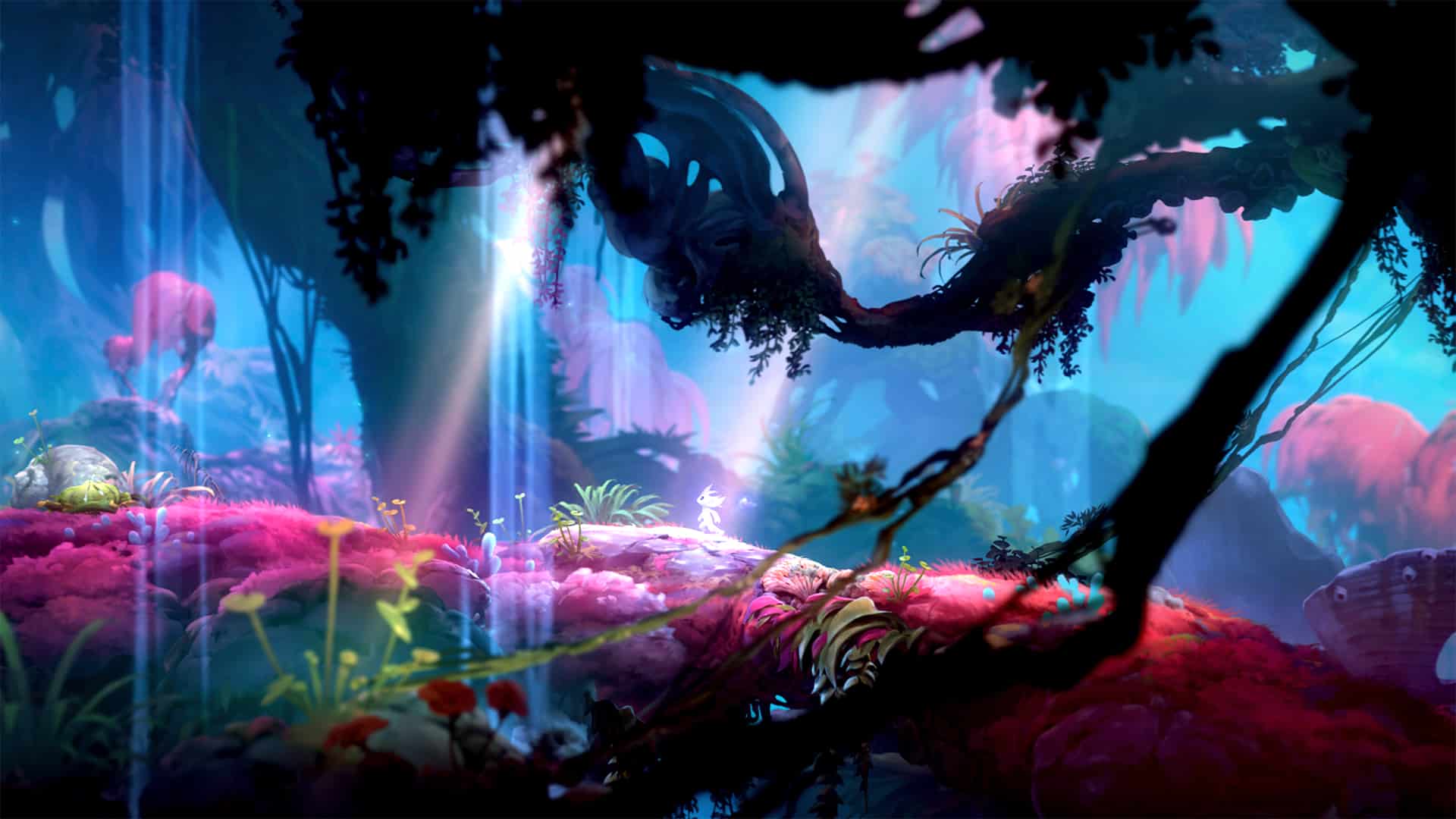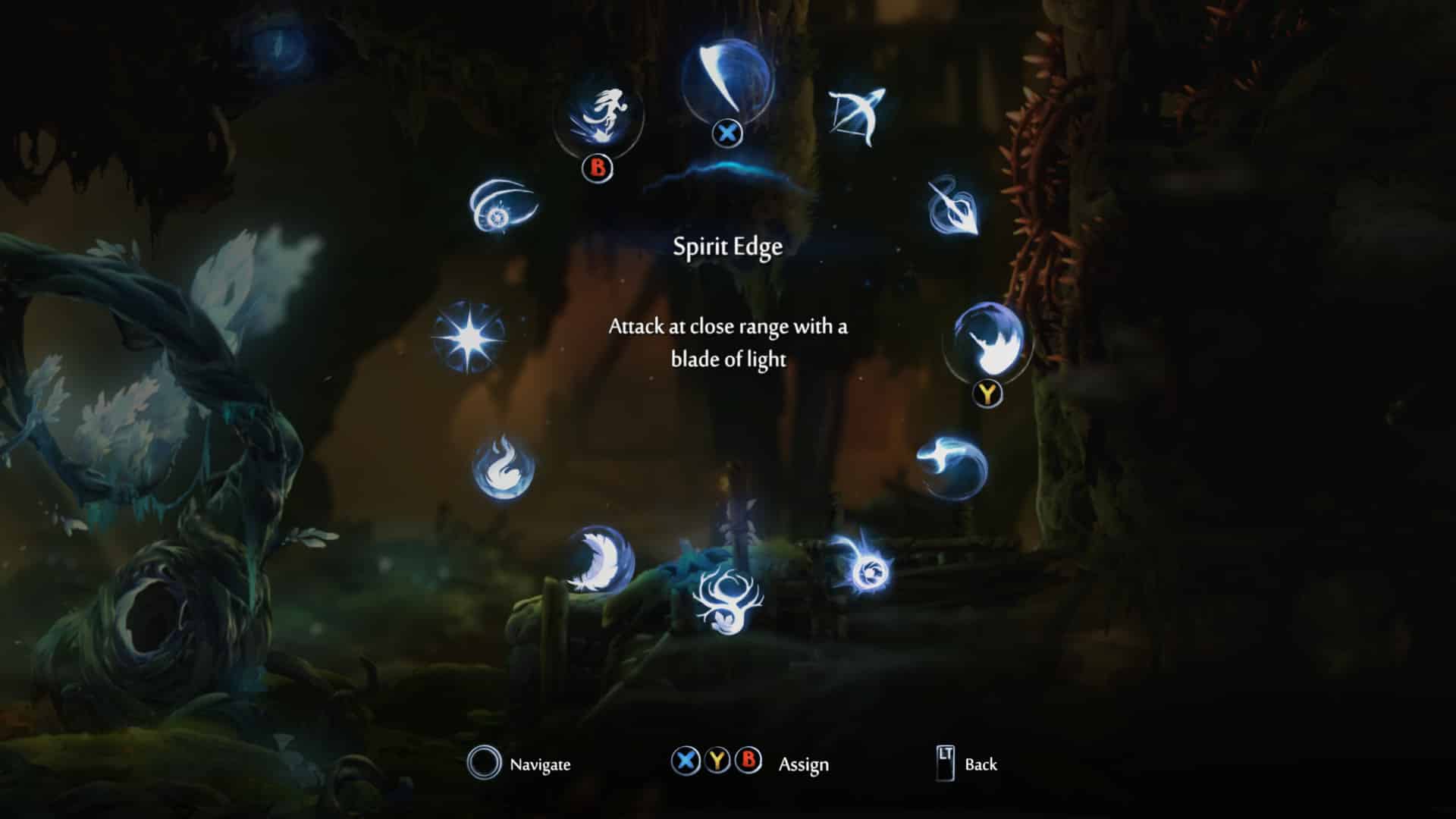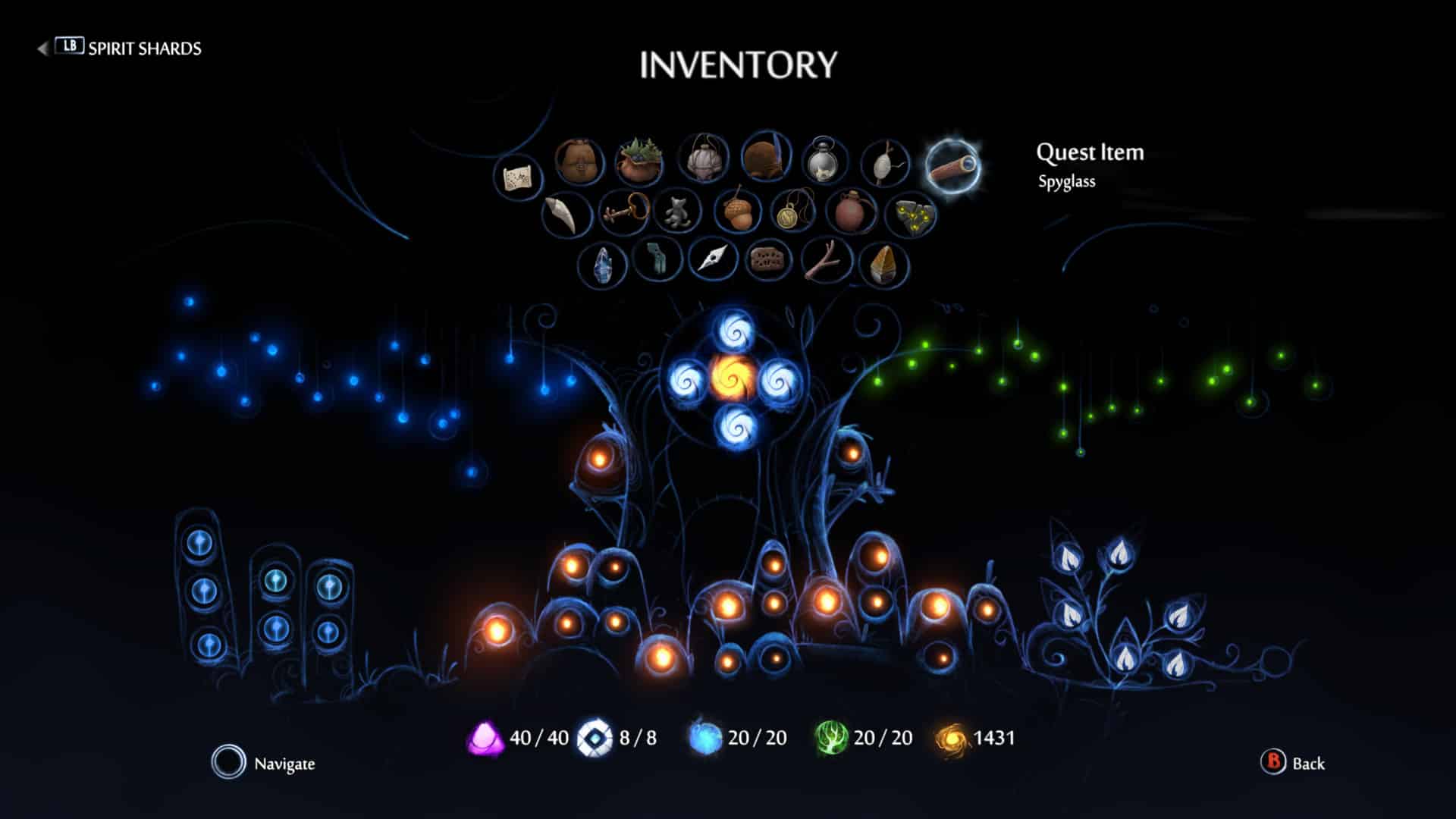Ori and the Will of the Wisps’ Magic Is in Its Player Freedom

Ori and the Will of the Wisps is a fantastic sequel that builds upon the Metroidvania heart of Ori and the Blind Forest by pulling inspiration non from the past, but rather from its coevals. While the roots of this tree might lie i firmly in Super Metroid and Castlevania: Philharmonic of the Nighttime, the branches of this wonderful follow-up are distinctly and with success drawing from 2017's fantabulous Hollow Knight. And like its feller gorgeous indie adventure, the magic in Will of the Wisps is in how it consistently encourages instrumentalist exemption and rewards curiosity and experimentation — and how it is peppered with cutscenes that unfold like miniature Pixar intestine-punches of emotion.
The sheer number of core abilities, combat options, motion skills, and perks both active and passive would be absolutely daunting if it weren't for the graceful pace at which developer Moonshine Studios doles them unfashionable. It takes many of the skills earned throughout the original game — think scurrying up walls, gliding through the air, and double up jumps — and bestows them upon you fairly early as permanent abilities. With a firm grasp on Ori's movement, you'll quickly find yourself being able to take on platforming challenges with the superheroic panache of Madeline in 2018's Celeste.
The sequel has you back up to speed somewhat early on and only when builds from at that place with a copulate of player-driven science pools. The first are the 12 active attacks and abilities you come across passim the risky venture. You can induce three appointed to the brass buttons at some given time, which means you bear to experiment and see what whole kit and boodle for to each one different scenario the spirited throws at you. These range from a quick sword, to a heavy hammer, to lobbed fireballs that can be bounced off of to reach higher ground. Then there are the 31 assorted Spirit Shards, which have purloined the identify of the original game's more time-honoured skill tree. These shards bathroom be either found hidden throughout the world or purchased from a friendly NPC. These range from an incredibly useful triple jump and the ability to stick to walls, to being able to spot secrets hidden throughout the human race and even swapping your health and energy meters.

This is where the shades of Hollow Horse's inspiration become most prominent. The catch here is that you only sustain a controlled number of slots that you stern equip at any given time, which forced ME to really flirt with the rather strategy I wanted to take into a given situation. If I knew there was a wad of platforming coming up, I'd rely on stuff like multiple jumps and clinging to walls. If I was perplexed in a particularly nasty combat encounter, I'd build out my Ori with quintuple attacks that can deal unscheduled damage and also net me additional orbs for each enemy killed. Experimenting with your loadout au fon changes the room you flirt with traversal, combat, and environmental puzzles.
The design and flow of the original brave's world was made up of locks and keys — locks being obstacles and keys being the abilities necessary to passport aforementioned obstacles — that felt like a classic Metroidvania. And while this method of design is still at bring in Bequeath of the Wisps, the freedom that comes from how you equip yourself when traversing the world makes your actions feel incomparable and personal. By the concluding act of the game, I found myself having 2 main "loadouts" for Ori — one for being able to maneuver through the world with speed, grace, and finesse, and another that buffed my little bunny buddy during waves of enemy challenges.
This sense of choice also leads to the game being highly replayable. There are convinced skills and abilities that I didn't gain until after-hours into my playthrough that would've completely changed the fashio I approached scenarios throughout the entire spunky. I relied hard on quick sword slashes and heavy hammer pounds, simply seeing unique other attacks like charged up javelin spears, boomeranging throwing stars, and energy-draining explosions made Pine Tree State want to immediately hop back in and toy around with them.

One final thing I loved about this form of player advancement in Will of the Wisps is how it was described visually throughout the game's menus. If you just pause the game at whatsoever moment, you're burned to a portrayal that slow fills in with your accomplishments ended the of course of your adventure. Abilities acquired form happening the left side of the screen, while bosses/tamed spirits appear on the right in a tableau that all but feels the like the Gilt Statue that lies at the heart of Super Metroid's Tourian. Also, departure into the inventory menu displays whol of your items, completed quests, and former accomplishments in a visual personal manner that unfurls like a kinsperson tree. This is admittedly a lowly touch that many might simply gloss over, but information technology's a very neat one that fed into that sensation ilk I was the author of my own story.
The sense of formulation I got from Ori and the Will of the Wisps, and by sexual morality Hollow Dub, is something that volition stick to me for quite close to clock time. IT genuinely seems to me that what these cardinal games did in terms of adding a litany of options that prey into player-dictated loadouts fundamentally changed how some were played, and I questionable many others developers will draw from this in the crossbreed Metroidvania genre exit forward.
https://www.escapistmagazine.com/ori-and-the-will-of-the-wisps-magic-is-in-its-player-freedom/
Source: https://www.escapistmagazine.com/ori-and-the-will-of-the-wisps-magic-is-in-its-player-freedom/
0 Response to "Ori and the Will of the Wisps’ Magic Is in Its Player Freedom"
Post a Comment